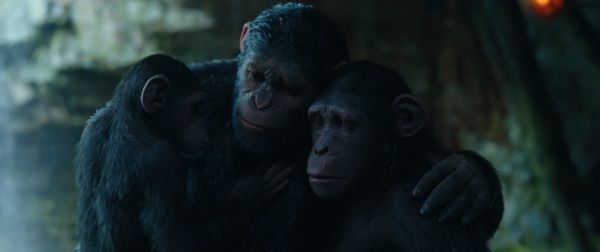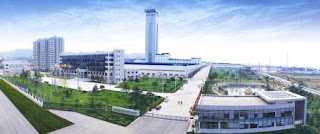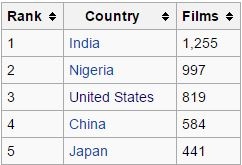Trademark Techniques of Some Famous-Directors
1. Christopher Nolan (The Dark Knight, Memento):

2. Quentin Tarantino (Kill Bill, Django Unchained):

3. James Cameroon (Titanic, Avatar):
4. David Fincher (Fight Club, The Social Network):

5. Wes Anderson (The Grand Budapest Hotel, Moonrise Kingdom):

6. Ingmar Bergman (Wild Strawberries, Persona):

7. Martin Scorsese (Goodfellas, The Departed):

8. David O Russel (American Hustle, Silver Linings Playbook):
9. Zack Snyder (300, Man of Steel):

10. Terrence Mallick (The Tree of Life, The Thin Red Line):

11. Stanley Kubrick (A Clockwork Orange, 2001: A Space Odyssey):

12.Steven Spielberg (Schindler’s List, Saving Private Ryan):

13. Alfred Hitchcock (Psycho, The Rear Window):
14. Darren Aronofsky (Black Swan, The Wrestler):

15. Ethan Coen and Joel Coen (Fargo, The Big Lebowski):
16. Woody Allen (Annie Hall, Midnight in Paris):

17. Guy Ritchie (Snatch, Lock Stock and Two Smoking Barrels)
18. Alejandro González Iñárritu (Birdman, Amores Perros)
19. Steve McQueen (Shame, Hunger)

20. Alfonso Cuaron (Children of Men, Gravity)

21. Guillermo Del Toro

22. Tom Tyker
23. Spike Jonze

24. Richard Linklater
- Dark and often Blue hued cinematography
- Non-linear timelines
- Crosscutting many scenes of parallel sequence to construct to a climax
- Frequently uses hard cuts when going to the next scenes. This is most common in his films from 'Batman Begins' onward, especially in 'The Dark Knight', where, in some cases, the hard cuts he uses will go so far as to nearly cut off character's lines in order to quickly get to the next scene.
- Frequently ends his films with a someone giving a philosophical monologue
- Displays the title just before the credits
2. Quentin Tarantino (Kill Bill, Django Unchained):
- Long tracking shots
- Crane shots which track above the characters
- normally a music will be playing in an action sequence supposedly serious
- Stylish violence and strong female leads
- "Trunk Shot" is where the camera stares above to the characters looking at them.
3. James Cameroon (Titanic, Avatar):
- Normally uses a blue tinge to his scenes
- Like Tarantino regularly has strong females leads
- Using a video monitor as the direction of the camera
4. David Fincher (Fight Club, The Social Network):
- Fluid tracking, which he uses so often going through walls
- title sequences are well thought
- Fridge shots are poplar
- Uses a lot of darkness, silhouettes and shadows
- Carries a color theme to his film, like blue and black for Fight Club and black and yellow for Zodiac
- Normally uses a sad ending
5. Wes Anderson (The Grand Budapest Hotel, Moonrise Kingdom):
- has a primary poetic visual appeal
- visual flourishes are detailed
- keeps his camera steady to give an impression of a painting
- likes to use symmetry
- Unorthodox families
6. Ingmar Bergman (Wild Strawberries, Persona):
- Close-ups of faces
- Close-ups of ticking clocks
- explicit use of shadows
- Religious themes
- normally has 2 characters having a deep conversation
7. Martin Scorsese (Goodfellas, The Departed):
- likes to make use of slow motion
- Long tracking shots
- will play a popular sound track
- Freeze-frame, and breaking the fourth wall
8. David O Russel (American Hustle, Silver Linings Playbook):
- focuses a lot on the characters by moving around them while they are having conversations, he zooms in and out of the character to sometimes give a disttracting feel
9. Zack Snyder (300, Man of Steel):
- fan of speed ramping where he moves across the speed of the visuals from slow motion to normal and then fast
- Lot of visual style
10. Terrence Mallick (The Tree of Life, The Thin Red Line):
- likes to use natural light
- almost all his films have a Midwestern background.
- voice-over-narration is common
11. Stanley Kubrick (A Clockwork Orange, 2001: A Space Odyssey):
- The Kubrick Stare as everyone knows by, uses it very commonly
- hallway long tracking shots
- gives a lot of importance to bathroom to shoot all his main shots there
- likes to end a film with "The End"
12.Steven Spielberg (Schindler’s List, Saving Private Ryan):
- uses emotions to tell a story
- Extreme close-up of a character’s face when he's in shock, known simply as “The Spielberg Face.”
- Focus on objects to give it a unique character (ball in Minority Report)
- John Williams is a regular as a composer
- likes to use 90 degree tracking shot with two cameras set parallel
13. Alfred Hitchcock (Psycho, The Rear Window):
- Often inserting viewers into the film using the camera as the eyes of a character to give the effect of voyeurism
- lots of mistaken identities and twists in the end
- likes to have a blonde playing an important role
14. Darren Aronofsky (Black Swan, The Wrestler):
- hip hop montage to show a set of actions together in a fast paced sequence
- Fades to white for emphasis, a cut in the story, or a finish of a scenes in the story.
- characters normally have a some kind of obsession which leads them to a path of self destruction
15. Ethan Coen and Joel Coen (Fargo, The Big Lebowski):
- Mostly his films center around a crime or a plan go wrong
- focuses camera an object which is rotating
- often has a lengthy sequence of song playing in the background with events unfolding
- men die gorily and often weirdly
- hotel rooms always make up for major sequences of films
- Dry humor
16. Woody Allen (Annie Hall, Midnight in Paris):
- normally has black and white title and credits with a simple jazz playing th ebackgroud
- they are often set in New York city
- uses the breaking the fourth wall thing often
17. Guy Ritchie (Snatch, Lock Stock and Two Smoking Barrels)
- often uses narration
- has multiple stories that intertwine and cross
- uses super fast camera movements in action scenes
- and within the action scenes will squeeze humour
18. Alejandro González Iñárritu (Birdman, Amores Perros)
- minimal music to keep it real
- many intersecting story lines spanning continents
- character are often tied to the past mistake
19. Steve McQueen (Shame, Hunger)
- for dialogues he either uses series of takes or really long takes
- Sometimes uses sophisticated colors like soothing green and royal blue to give a sober quiet atmosphere
- likes to stick to just one camera for the whole film
- sometimes goes brutal in portraying rawness
20. Alfonso Cuaron (Children of Men, Gravity)
- like Greengas often uses handheld camera to may be produce a documentary like effect
- recurring pairing with Emmanuel Lubeski as his director of photography
- Uses really long shots which are digitally put together
21. Guillermo Del Toro
- likes to makes use of insects either for symbolism or other purposes
- religious relics and catholic importance are visible
- Scenes often emanate either a yellow amber or bluish hue
22. Tom Tyker
- dynamic quick and flashy editing
- Innovative visual sequences and compelling imagery
23. Spike Jonze
- emotional story telling with a lot of heart
- smooth combination of fantasy and the real world
- Subtle handheld camera operation
- Green and blue tinged scenes lit by fluorescence
24. Richard Linklater
- the whole film is set in one day
- his films normally are based in Texas
- Long conversations on Life and Philosophy
- (Sources: IMDb - Movies, TV and Celebrities , The Cheat Sheet,BuzzFeed, Home, Variety, Movies. Games. Filmmaking. | Cinelinx.com , erasingclouds, No Film School, Sherdog Mixed Martial Arts Forums, Birthdays_OFFmag, Beautiful Sexy Men Wallpapers, Male Celebrities Pictures, News, Forum & More on MANPAPER.COM)




Comments
Post a Comment